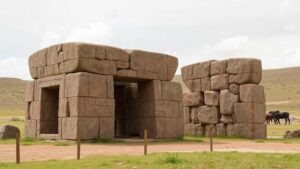Exploring the role of forgotten shrines in connecting spiritual and archeological sites.
Exploring the Role of Forgotten Shrines in Connecting Spiritual and Archaeological Sites
Forgotten shrines often serve as a testament to humanitys enduring quest for meaning, spirituality, and connection to the past. These sites play a crucial role in both spiritual and archaeological narratives, bridging the gap between the sacred and the historical. In this exploration, we will delve into the significance of these shrines, the archaeological insights they provide, and how they continue to connect individuals to their history.
The Nature of Forgotten Shrines
Forgotten shrines are often hidden in remote locations, cloaked in the mysteries of time. can be small altars, cave paintings, or larger structural remains that once held significant spiritual importance. Their obscurity often leads to them being overlooked in historical narratives, yet these locations can be rich sources of knowledge.
For example, the Sanctuary of Apollo Hylates in Cyprus, dating back to the 4th century BC, was once a vibrant center of worship. Over time, it fell into disuse, only to be rediscovered in the late 20th century. Investigations revealed not just the physical remnants of rituals but also inscriptions that shed light on ancient worship practices.
The Archaeological Significance
From an archaeological perspective, forgotten shrines can illuminate the cultural and religious practices of past civilizations. Excavations at such sites often yield artifacts, tools, and remnants that offer tangible links to social behavior, belief systems, and historical timelines.
- In Egypt, the Temple of Karnak contained smaller shrines that were once dedicated to lesser-known deities. Archaeological studies of these shrines reveal local worship practices that differed from the main temples.
- The Stone Circle of Callanish in Scotland, believed to be a ritual site, offers insights into the Neolithic societys connection to astronomy and spirituality.
Through these findings, archaeologists can infer patterns of spiritual life and social organization, gaining a clearer picture of ancient societies.
Cultural Connections and Spirituality
Forgotten shrines foster a unique connection to spirituality. often serve as pilgrimage sites for modern practitioners who seek to reconnect with ancestral roots or understand the spiritual significance of their heritage.
A poignant example is the Chichen Itza site in Mexico, which contains the sacred well known as the Cenote Sagrado. This location was used for rituals, including sacrifices to the rain god Chaac. Today, it remains a site of reverence for the descendants of the Maya, who return to honor their traditions.
Modern Applications and Preservation Efforts
As interest in heritage tourism and spiritual journeys grows, the preservation of forgotten shrines has gained attention. Organizations such as Global Heritage Fund and local community initiatives focus on preserving these sites, ensuring they remain accessible for educational and spiritual purposes.
- Adaptive Reuse: Some sites are transformed into cultural centers that offer workshops, tours, and educational programs, fostering a deepened understanding of their historical context.
- Community Engagement: Local communities often mobilize to protect their sacred spaces, ensuring that the spiritual legacy is maintained for future generations.
Conclusion and Actionable Takeaways
Forgotten shrines hold keys to understanding the spiritual and historical evolution of cultures across the globe. They serve not only as archaeological treasures but as poignant reminders of our shared human experience. To preserve these invaluable sites, it is essential to support conservation efforts and engage with local communities.
For those interested in exploring these connections, consider:
- Visiting local shrines and participating in guided tours that prioritize historical and spiritual education.
- Supporting conservation organizations that focus on preserving archaeological sites.
By engaging with forgotten shrines, we can foster a deeper appreciation for our cultural heritage and spiritual roots, allowing history to inform present and future generations.


